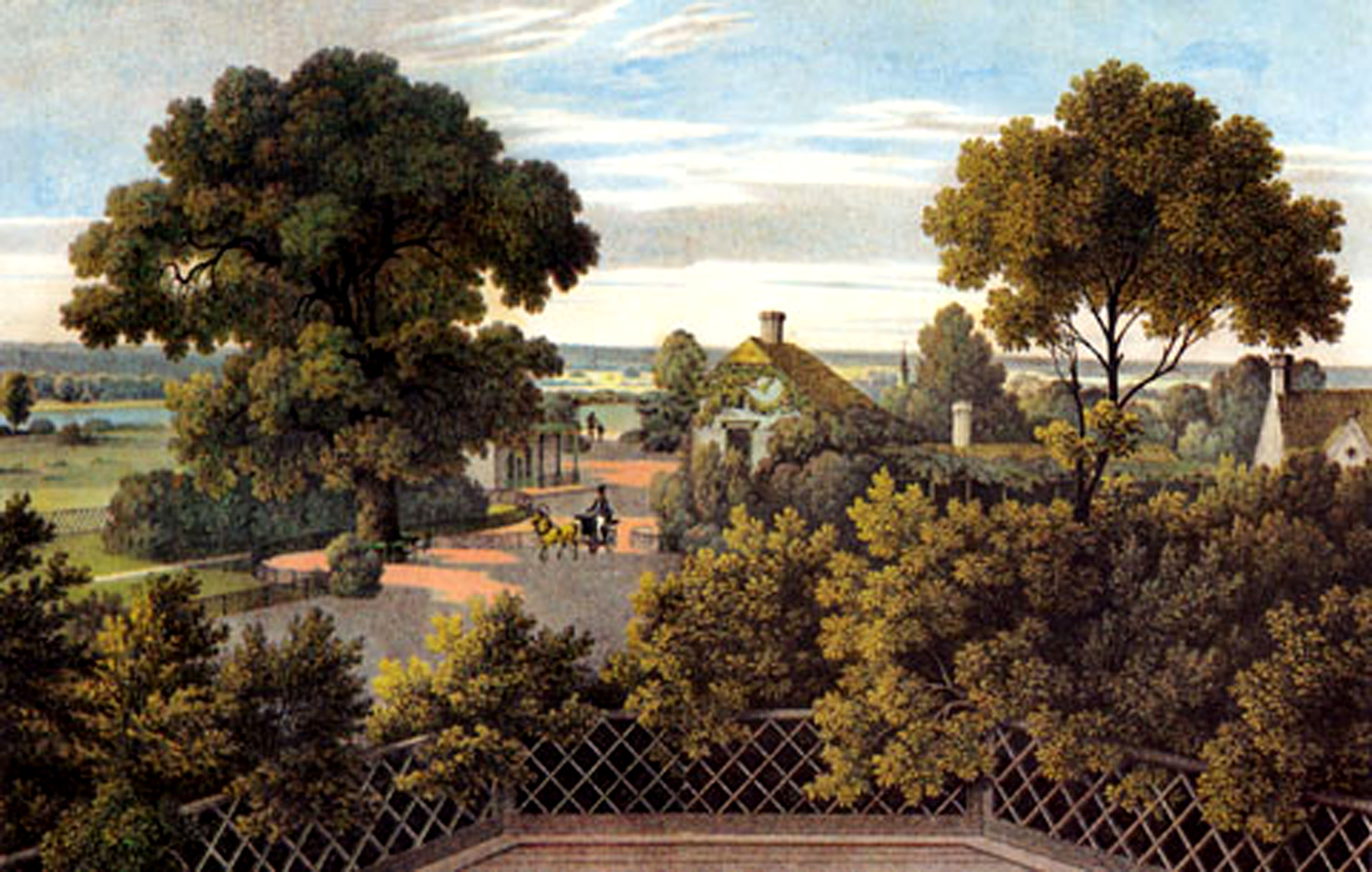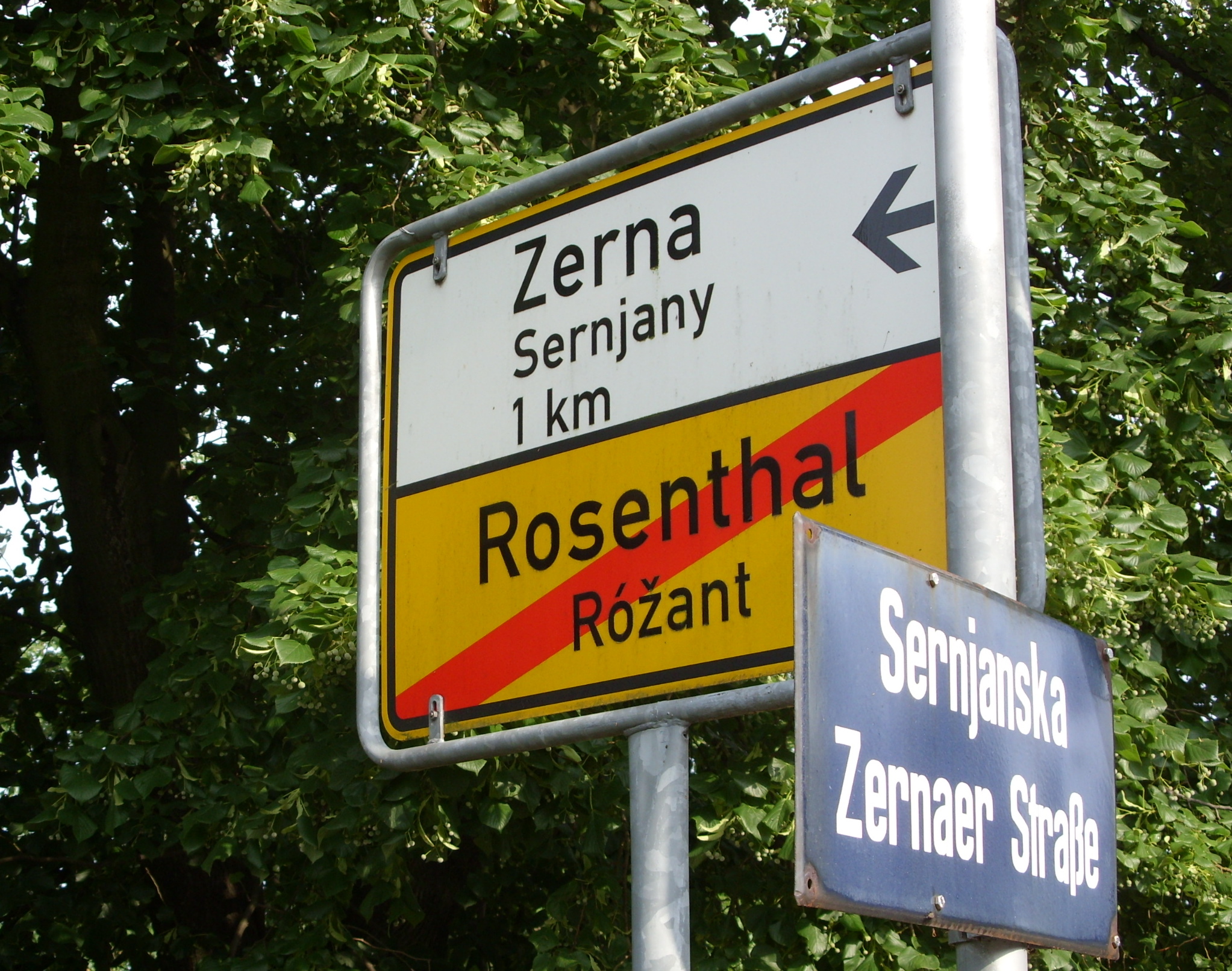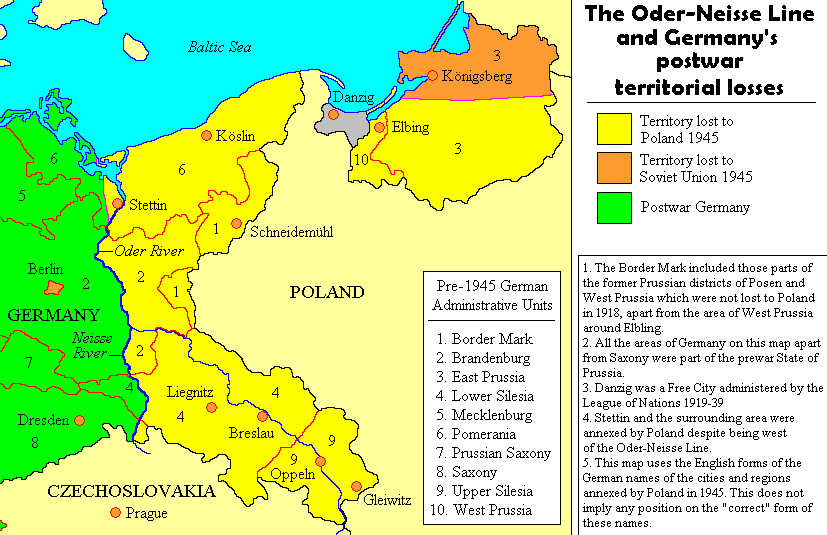|
Muskau
Bad Muskau (; formerly ''Muskau'', hsb, Mužakow, pl, Mużaków, cs, Mužakov) is a spa town in the historic Upper Lusatia region in Germany, at the border with Poland. It is part of the Görlitz district in the State of Saxony. It is located on the banks of the Lusatian Neisse river. The town is part of the recognized Sorbian settlement area in Saxony. Upper Sorbian has an official status next to German, with all villages bearing names in both languages. The town of Lugknitz, formerly incorporated into Bad Muskau, was separated in 1945 by the new state border drawn along the Oder–Neisse line. Muskau Park, a UNESCO World Heritage Site, is similarly split with the municipality containing its western half. Bad Muskau gained worldwide fame through prince and landscape artist Hermann von Pückler-Muskau, who created a unique cultural asset with his landscape park. History Muskau (Sorbian, "men's town") was founded in the 13th century as a trading center and defensive locat ... [...More Info...] [...Related Items...] OR: [Wikipedia] [Google] [Baidu] |
Hermann, Fürst Von Pückler-Muskau
Prince Hermann Ludwig Heinrich von Pückler-Muskau (; born as Count Pückler, from 1822 Prince; 30 October 1785 – 4 February 1871) was a German nobleman, renowned as an accomplished artist in landscape gardening, as well as the author of a number of books mainly centering around his travels in Europe and Northern Africa, published under the pen name of "Semilasso". Life Pückler-Muskau was the first of five children of Count Carl Ludwig Hans Erdmann Pückler, and the Countess Clementine of Callenberg, who gave birth to him at age 15. He was born at Muskau Castle (now Bad Muskau) in Upper Lusatia, then ruled by the Electorate of Saxony. He served for some time in the Saxon "Garde du Corps" cavalry regiment at Dresden, and afterwards traveled through France and Italy, often by foot. In 1811, after the death of his father, he inherited the ''Standesherrschaft'' (barony) of Muskau. Joining the war of liberation against Napoleon I of France, he left Muskau under the General ... [...More Info...] [...Related Items...] OR: [Wikipedia] [Google] [Baidu] |
Muskau Park
Muskau Park (german: Muskauer Park, officially: ''Fürst-Pückler-Park Bad Muskau''; pl, Park Mużakowski) is a landscape park in the Upper Lusatia region of Germany and Poland. It is the largest and one of the most famous English gardens in Central Europe, stretching along both sides of the German–Polish border on the Lusatian Neisse. The park was laid out from 1815 onwards at the behest of Prince Hermann von Pückler-Muskau (1785–1871), centered on his Schloss Muskau residence. In July 2004, Muskau Park was added to the list of UNESCO World Heritage Sites (as a joint effort between Poland and Germany) because of its 'utopian' design that incorporates both native plants and the nearby town, and its influence on the development of landscape architecture. The park also stands as one of Poland's official Historic Monuments (''pomnik historii''), as designated May 1, 2004, and tracked by the National Heritage Board of Poland. Overview The park covers of land in Poland and ... [...More Info...] [...Related Items...] OR: [Wikipedia] [Google] [Baidu] |
Łęknica
Łęknica (german: Lugknitz; hsb, Wjeska) is a border town in western Poland, one of the two gminas of Żary County in Lubusz Voivodeship. Muskau Park (''Park Mużakowski''), a Polish-German World Heritage Site, stretches north of the town centre. Geography The town is situated in the Polish part of the historic Upper Lusatia region, in the broad valley of the Neisse river, which forms the border with Germany. A bridge across the river connects it with the opposite German town of Bad Muskau, another border crossing in the south leads to Krauschwitz. Łęknica's population numbers 2,478 (2019). History The area along the Neisse river was already settled in the Bronze Age. While neighbouring Muskau was already mentioned in 1249 and was awarded city rights in 1452, the village of ''Lugnitz'' was first documented in 1505, then part of the Muskau state country. According to the 1635 Peace of Prague, Lugknitz together with Upper Lusatia passed from the Bohemian Crown to the E ... [...More Info...] [...Related Items...] OR: [Wikipedia] [Google] [Baidu] |
Upper Lusatia
Upper Lusatia (german: Oberlausitz ; hsb, Hornja Łužica ; dsb, Górna Łužyca; szl, Gōrnŏ Łużyca; pl, Łużyce Górne or ''Milsko''; cz, Horní Lužice) is a historical region in Germany and Poland. Along with Lower Lusatia to the north, it makes up the region of Lusatia, named after the Slavic ''Lusici'' tribe. Both parts of Lusatia are home to the West Slavic minority group of the Sorbs. The major part of Upper Lusatia is part of the German federal state of Saxony, roughly comprising Bautzen district and Görlitz district. The northwestern extremity, around Ruhland and Tettau, is incorporated into the Oberspreewald-Lausitz district of the state of Brandenburg. The eastern part of Upper Lusatia is in Poland, east of the Neisse (''Nysa'') river, in Lower Silesian Voivodeship. A small strip of land in the north around Łęknica is incorporated into Lubusz Voivodeship, along with the Polish part of Lower Lusatia. The historic capital of Upper Lusatia is Bautzen/ ... [...More Info...] [...Related Items...] OR: [Wikipedia] [Google] [Baidu] |
State Country
State country (german: Freie Standesherrschaft; cs, stavovské panství; pl, państwo stanowe) was a unit of administrative and territorial division in the Bohemian crown lands of Silesia and Upper Lusatia, existing from 15th to 18th centuries. These estates were exempt from feudal tenure by privilege of the Bohemian kings. Some of the state countries were highly autonomous, they had their own legal code and their lords were vassals of the king himself, not of the local dukes or princes. Silesia The state countries were formed from former Duchies of Silesia, whose ruling dynasties - branches of the Silesian Piasts (see Dukes of Silesia) - had died out. As a ceased fief their possessions would fall to the Bohemian crown and sometimes were granted to lords of lesser nobility not affiliated with the ducal Piast family. In 1492 King Vladislas II Jagiellon of Bohemia established three state countries within the Duchy of Oleśnica (''Oels''), after Duke Konrad X the White had died w ... [...More Info...] [...Related Items...] OR: [Wikipedia] [Google] [Baidu] |
Lusatian Neisse
The Lusatian Neisse (german: Lausitzer Neiße; pl, Nysa Łużycka; cs, Lužická Nisa; Upper Sorbian: ''Łužiska Nysa''; Lower Sorbian: ''Łužyska Nysa''), or Western Neisse, is a river in northern Central Europe.''Neisse River'' at www.britannica.com. Retrieved 4 Feb 2011. at http://eagri.cz/public. Retrieved 4 Feb 2011. It rises in the , near |
Sorbian Settlement Area
hsb, Serbski sydlenski rum, dsb, Serbski sedleński rum, image_map=File:Sorbisches Siedlungsgebiet.png, subdivision_type1=Country, subdivision_name1=Germany, subdivision_type2=State, subdivision_name2=Saxony, subdivision_type3=State, subdivision_name3=Brandenburg The Sorbian settlement area ( dsb, Serbski sedleński rum, hsb, Serbski sydlenski rum, german: Sorbisches Siedlungsgebiet; in Brandenburg officially ''Siedlungsgebiet der Sorben/Wenden'') commonly makes reference to the area in the east of Saxony and the South of Brandenburg in which the West Slavic people of the Sorbs (in Brandenburg also called "Wends") live autochthonously. In colloquial German, it is called Sorbenland (Land of the Sorbs); before 1945 also – sometimes pejoratively – called ''Wendei''. This area was reduced constantly during the centuries due to assimilation, Germanization and strip mining lignite. Additionally, the identification as Sorb is free under federal and state law and cannot be verif ... [...More Info...] [...Related Items...] OR: [Wikipedia] [Google] [Baidu] |
Oder–Neisse Line
The Oder–Neisse line (german: Oder-Neiße-Grenze, pl, granica na Odrze i Nysie Łużyckiej) is the basis of most of the international border between Germany and Poland from 1990. It runs mainly along the Oder and Lusatian Neisse rivers and meets the Baltic Sea in the north, just west of the ports of Szczecin and Świnoujście (German: ''Stettin'' and ''Swinemünde''). All prewar German territories east of the line and within the 1937 German boundaries—comprising nearly one quarter (23.8 percent) of the Weimar Republic—were ceded under the changes decided at the postwar Potsdam Conference (Potsdam Agreement), with the greatest part becoming part of Poland. The remainder, consisting of northern East Prussia with the German city of Königsberg (renamed Kaliningrad), was allocated to the Soviet Union, as the Kaliningrad Oblast of the Russian SFSR (today Russia). However this did not become completely official until the peace treaty for Germany was signed. The ethnic Germa ... [...More Info...] [...Related Items...] OR: [Wikipedia] [Google] [Baidu] |
Spa Town
A spa town is a resort town based on a mineral spa (a developed mineral spring). Patrons visit spas to "take the waters" for their purported health benefits. Thomas Guidott set up a medical practice in the English town of Bath in 1668. He became interested in the curative properties of the hot mineral waters there and in 1676 wrote ''A discourse of Bathe, and the hot waters there. Also, Some Enquiries into the Nature of the water''. This brought the purported health-giving properties of the waters to the attention of the aristocracy, who started to partake in them soon after. The term ''spa'' is used for towns or resorts offering hydrotherapy, which can include cold water or mineral water treatments and geothermal baths. Argentina *Termas de Rio Hondo *Presidencia Roque Sáenz Peña Australia There are mineral springs in the Central Highlands of Victoria. Most are in and around Daylesford and Hepburn Springs. Daylesford and Hepburn Springs call themselves 'Spa Countr ... [...More Info...] [...Related Items...] OR: [Wikipedia] [Google] [Baidu] |
Görlitz (district)
Görlitz district (german: Landkreis Görlitz; Upper Sorbian: ''Wokrjes Zhorjelc''; cs, Zemský okres Zhořelec) is a district ('' Kreis'') in Saxony, and the easternmost in Germany. It is named after its capital Görlitz. It borders (from the west and clockwise) the district of Bautzen, the state of Brandenburg, Poland and the Czech Republic. History The district was established in August 2008 by merging three smaller districts: the district of Löbau-Zittau, Niederschlesischer Oberlausitzkreis (Lower Silesian Upper Lusatia district) and the urban district of Görlitz. Geography The district comprises the south-eastern part of Lusatia and the western part of Silesia, including parts of the Lusatian Mountains. The Lusatian Neisse forms its eastern border, and the Spree river flows through the western part of the district. Coat of arms The coat of arms of Görlitz district contains references to the various territories the district has been part of in the past. The blac ... [...More Info...] [...Related Items...] OR: [Wikipedia] [Google] [Baidu] |
Upper Sorbian Language
Upper Sorbian (), occasionally referred to as "Wendish", is a minority language spoken by Sorbs in Germany in the historical province of Upper Lusatia, which is today part of Saxony. It is grouped in the West Slavic language branch, together with Lower Sorbian, Czech, Polish, Slovak and Kashubian. History The history of the Upper Sorbian language in Germany began with the Slavic migrations during the 6th century AD. Beginning in the 12th century, there was a massive influx of rural Germanic settlers from Flanders, Saxony, Thuringia and Franconia. This so-called "Ostsiedlung" (eastern settlement or expansion) led to a slow but steady decline in use of the Sorbian language. In addition, in the Saxony region, the Sorbian language was legally subordinated to the German language. Language prohibitions were later added: In 1293, the Sorbian language was forbidden in Berne castle before the courts; in 1327 it was forbidden in Zwickau and Leipzig, and from 1424 on it was forbidden ... [...More Info...] [...Related Items...] OR: [Wikipedia] [Google] [Baidu] |
Lands Of The Bohemian Crown
The Lands of the Bohemian Crown were a number of incorporated states in Central Europe during the medieval and early modern periods connected by feudal relations under the Bohemian kings. The crown lands primarily consisted of the Kingdom of Bohemia, an electorate of the Holy Roman Empire according to the Golden Bull of 1356, the Margraviate of Moravia, the Duchies of Silesia, and the two Lusatias, known as the Margraviate of Upper Lusatia and the Margraviate of Lower Lusatia, as well as other territories throughout its history. This agglomeration of states nominally under the rule of the Bohemian kings was historically referred to simply as Bohemia. They are now sometimes referred to in scholarship as the Czech lands, a direct translation of the Czech abbreviated name. The joint rule of ''Corona regni Bohemiae'' was legally established by decree of King Charles IV issued on 7 April 1348, on the foundation of the original Czech lands ruled by the Přemyslid dynasty until 1306. ... [...More Info...] [...Related Items...] OR: [Wikipedia] [Google] [Baidu] |








